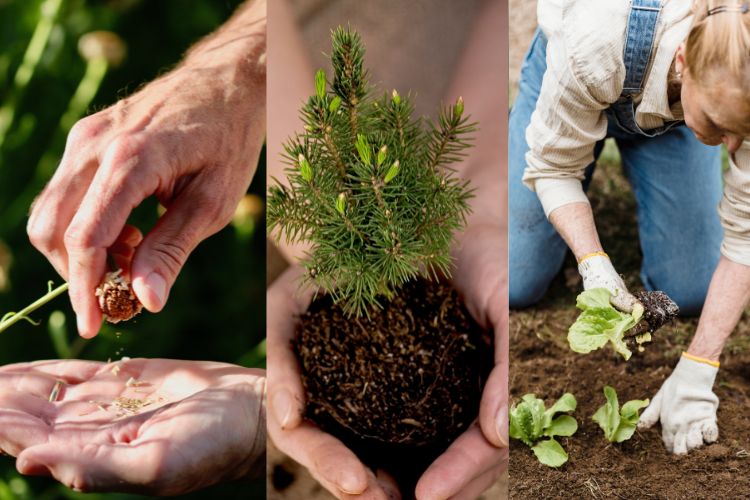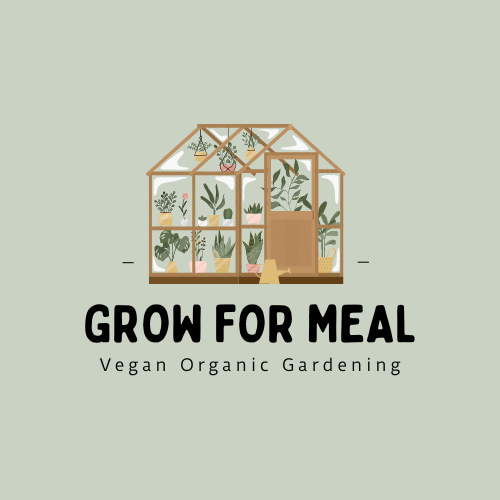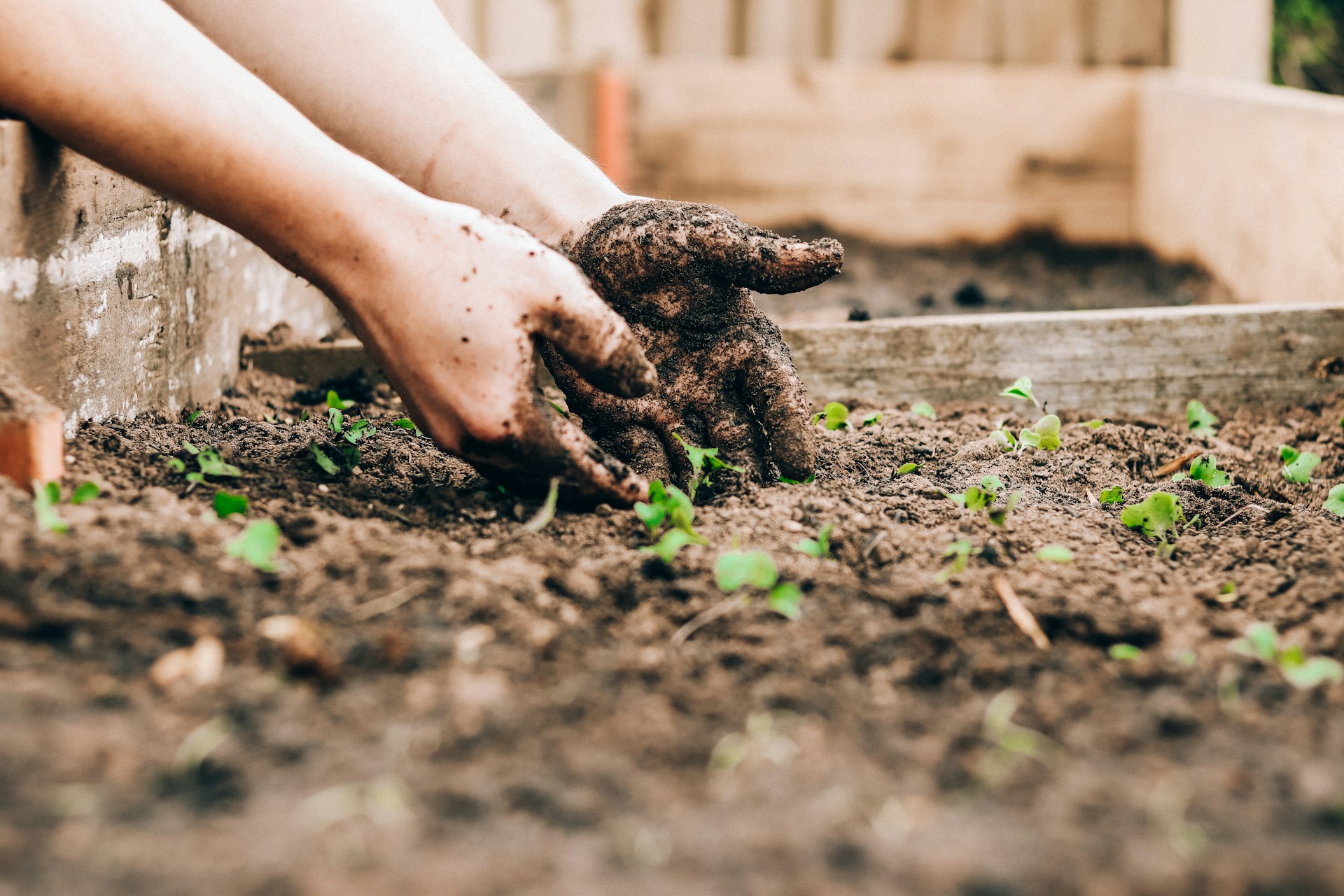In recent years, gardening has undergone an exciting transformation, with veganic gardening leading the charge. This eco-friendly method focuses on growing plants without synthetic fertilizers or pesticides. It also highlights the importance of nurturing a harmonious relationship with nature. As more folks realize how their gardening practices affect the environment, interest in veganic gardening keeps growing.
Staying in the loop with emerging trends is key for anyone wanting to boost their gardening success and sustainability. By adopting innovative techniques, gardeners can increase their yields, promote biodiversity, and make a positive impact on our planet. Let’s dive into the top five veganic gardening trends of 2025 that are sure to inspire your gardening journey!
1. Vertical Gardening

Vertical gardening lets you grow plants upward instead of outward, making it a game changer for small yards and urban settings. This method uses vertical space creatively, from wall planters to hanging pots, transforming your area into a lush green display.
One of the best things about vertical gardening? It saves space! You can maximize your growing area without needing a huge plot of land. Plus, it improves air circulation around your plants, cutting down the risk of disease. Growing plants vertically also helps them soak up more sunlight, often leading to higher yields.
Starting a vertical garden is easier than you think. First, pick a sunny spot. Then, choose structures like trellises, vertical planters, or wall-mounted shelves to support your plants. For your plant selection, think leafy greens, herbs, and compact fruiting plants like cherry tomatoes. These thrive in vertical setups and are usually low-maintenance.
Don’t forget to provide enough water and nutrients, as vertical gardens can dry out quickly. With a little planning and creativity, you can craft a stunning vertical garden that enhances your space and boosts your gardening productivity!
2. Indoor Herb Gardens

Indoor herb gardens have taken off in popularity, and it’s easy to see why. Growing herbs indoors gives you fresh flavors all year long. This option is perfect for those with limited outdoor space or tricky climates.
The perks of indoor herb gardening are endless. Fresh herbs not only elevate the taste of your meals but also offer nutritional benefits. They can boost air quality and create a calming vibe in your home. Plus, having herbs on hand inspires healthier cooking choices!
To kick off your indoor herb garden, find a sunny spot. South-facing windows typically provide the best light. Choose pots with proper drainage to prevent root rot. Great options for indoors include basil, parsley, cilantro, and chives, as they thrive well in containers.
When planting, use high-quality potting soil packed with nutrients. Water your herbs regularly, but don’t drown them; keep the soil slightly moist. Feed your herbs with a balanced, organic fertilizer every few weeks to encourage strong growth.
Consider using small containers or a windowsill planter to maximize space. With a little care and attention, your indoor herb garden will flourish and provide fresh ingredients for all your culinary adventures!
3. Fermentation Gardens

Fermentation gardens are a creative blend of gardening and food preservation. These gardens focus on growing plants that can be fermented, like vegetables and herbs, highlighting the link between fresh produce and gut health.
The health benefits of fermented foods are impressive. They’re packed with probiotics that support digestion and boost your immune system. Plus, fermentation enhances the flavors of fruits and vegetables, making your meals even more delightful.
To start your fermentation garden, select a variety of plants. Cucumbers, cabbage, radishes, and herbs like dill are fantastic choices, perfect for pickling and other fermentation processes.
Design your garden for maximum sunlight and airflow. Raised beds or containers help keep your plants organized and accessible. Ensure proper spacing for healthy growth and easy harvesting.
Once your plants are ready, dive into different fermentation methods. Simple techniques like pickling in brine or whipping up kimchi are excellent starting points. With a fermentation garden, you’ll enjoy fresh produce and the rewarding experience of preserving it for future meals!
4. Seed Saving

Seed saving involves collecting seeds from your garden for future planting. This sustainable practice cuts down on reliance on store-bought seeds while promoting biodiversity and preserving heirloom varieties.
The environmental benefits of seed saving are significant. It fosters genetic diversity in plants and helps reduce waste. By saving seeds, you play a part in nurturing a healthier ecosystem.
To get started, choose healthy, mature plants. Make sure to wait until the seeds are fully ripe before harvesting. Great options for seed saving include tomatoes, peppers, beans, and sunflowers.
Proper drying and storage are vital for keeping seeds viable. After harvesting, dry them in a cool, dark spot. Once dried, store the seeds in labeled envelopes or airtight containers.
Keep your saved seeds in a cool, dry place to preserve their freshness. Consider joining local gardening groups or community gardens to exchange seeds and share knowledge. By embracing seed saving, you’ll cultivate a self-sustaining garden and make a positive impact on the environment!
5. Aquaponics

Aquaponics is a sustainable gardening method that fuses aquaculture and hydroponics. This innovative system raises fish and grows plants together in a mutually beneficial environment. The fish waste provides essential nutrients for the plants, while the plants filter the water for the fish.
The benefits of aquaponics are impressive. It uses less water than traditional gardening and eliminates the need for chemical fertilizers. This method can yield a diverse range of vegetables and fish, creating a self-sustaining ecosystem.
To set up your aquaponics system, start by finding a sunny location. You’ll need a fish tank, grow bed, and a pump. Select fish that thrive in aquaponics, such as tilapia or goldfish, along with plants like lettuce and herbs.
Fill the grow bed with a growing medium, such as clay pebbles, to get started. Introduce the fish into the tank and regularly monitor water quality. Proper filtration and aeration are crucial to keep your fish healthy.
As your system matures, you’ll enjoy fresh fish and vibrant vegetables. Aquaponics is a rewarding way to practice sustainable gardening while providing healthy food for your family!
The world of veganic gardening is evolving, with exciting trends shaping the future. Vertical gardening, indoor herb gardens, fermentation gardens, seed saving, and aquaponics all offer innovative solutions. These practices enhance sustainability and maximize space for every gardener.
By incorporating these trends, you can improve your gardening success and enjoy fresh, healthy produce. Embracing these methods not only benefits your garden but also supports a greener planet.
Explore these top trends and find ways to integrate them into your gardening journey. Your efforts can contribute to a healthier lifestyle and a more sustainable environment. Happy gardening!




